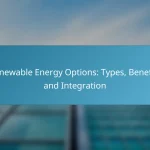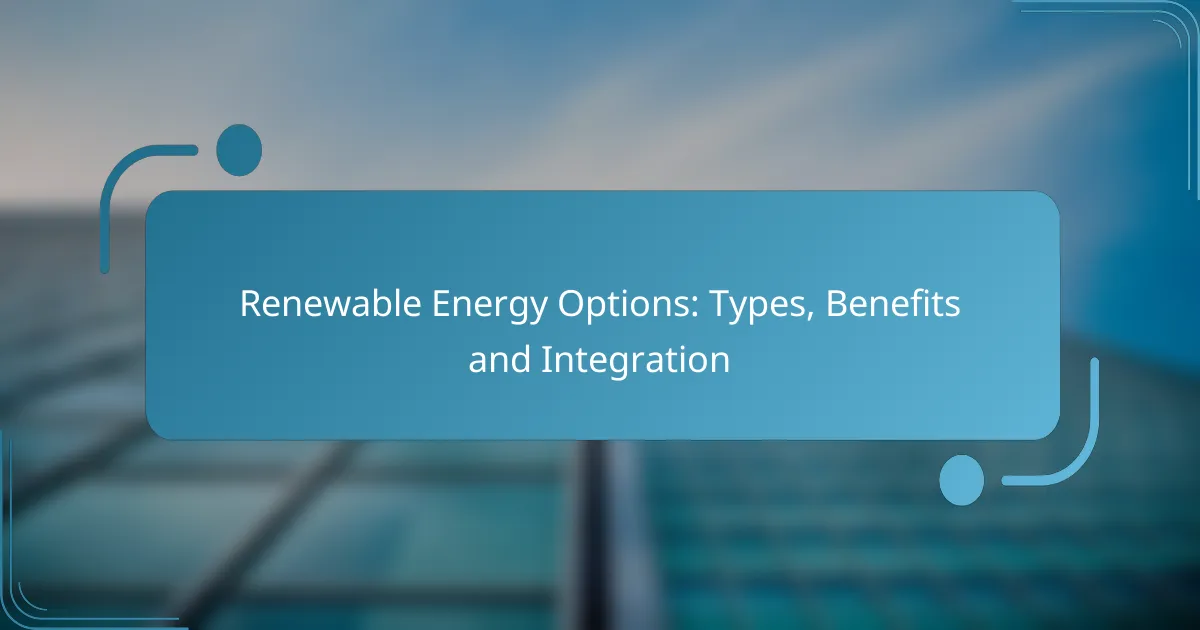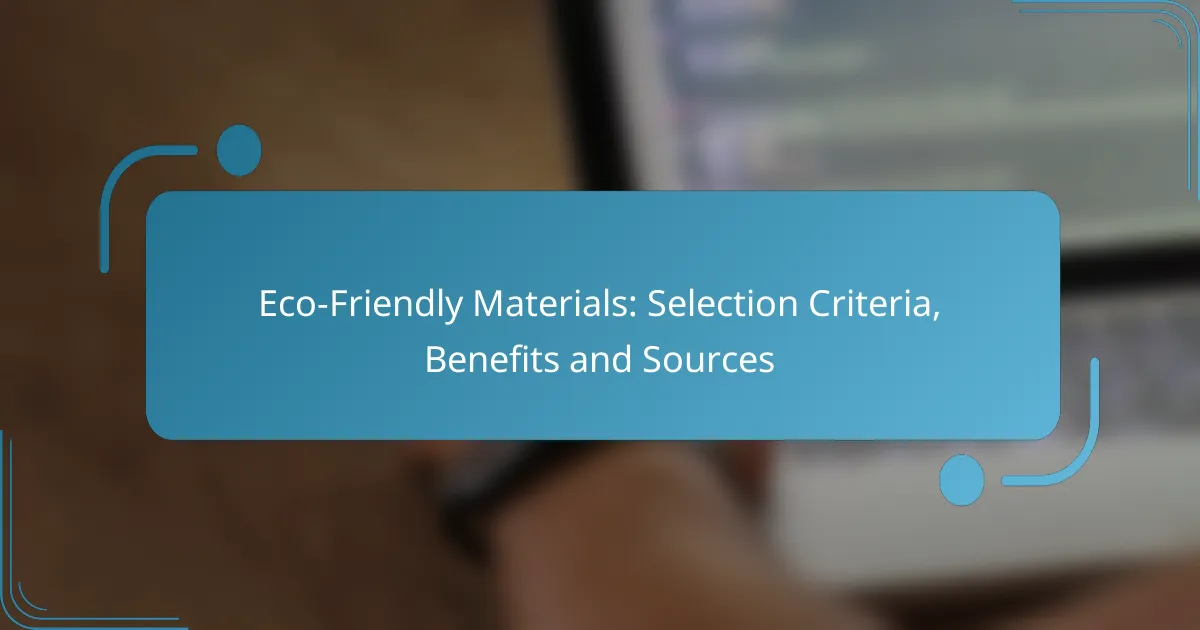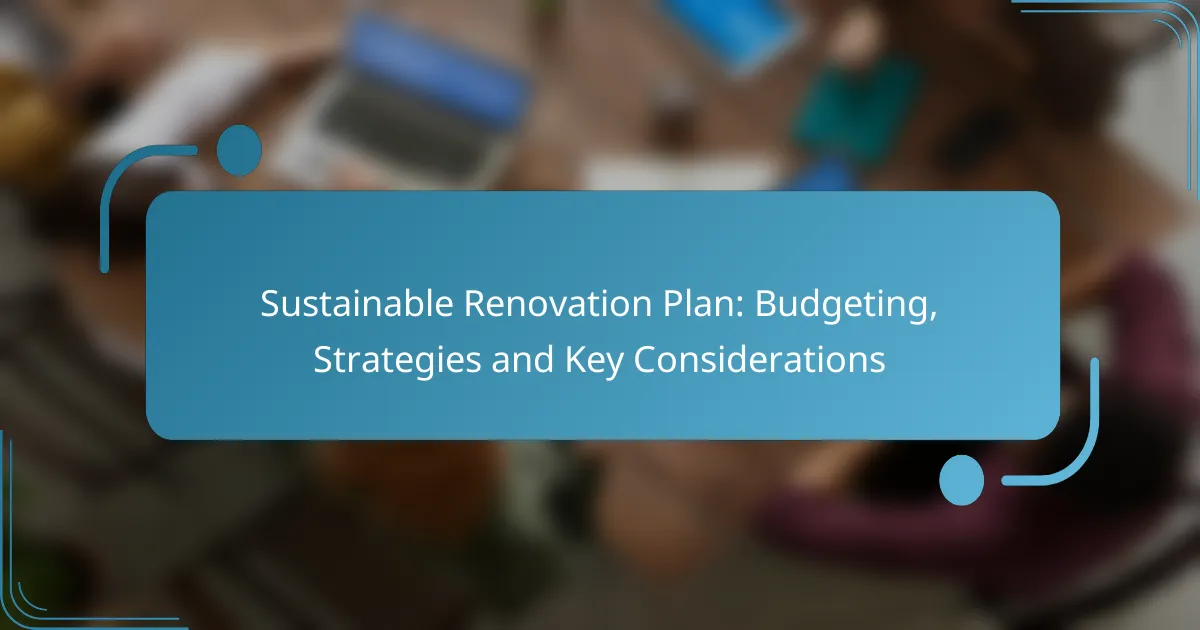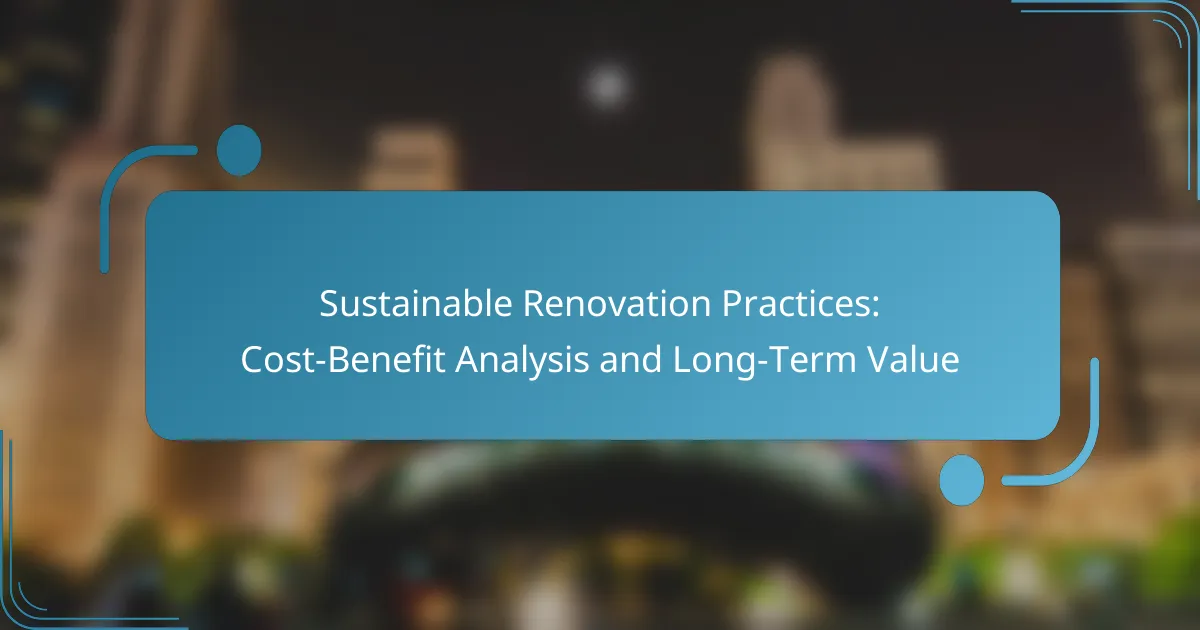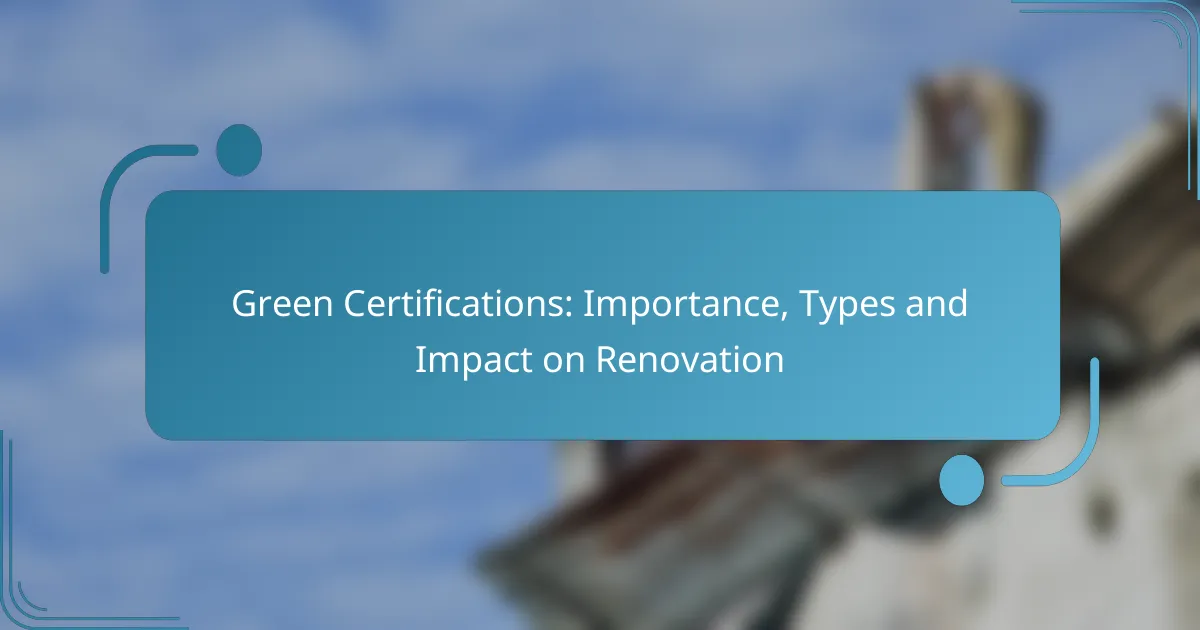Renewable energy is derived from natural sources that are continuously replenished, including solar, wind, hydropower, geothermal, and biomass. These energy types not only reduce environmental impact but also enhance energy security and create jobs, making them essential for sustainable development. Integrating renewable energy into existing systems requires thoughtful planning and investment in technology to ensure a smooth transition to a greener future.
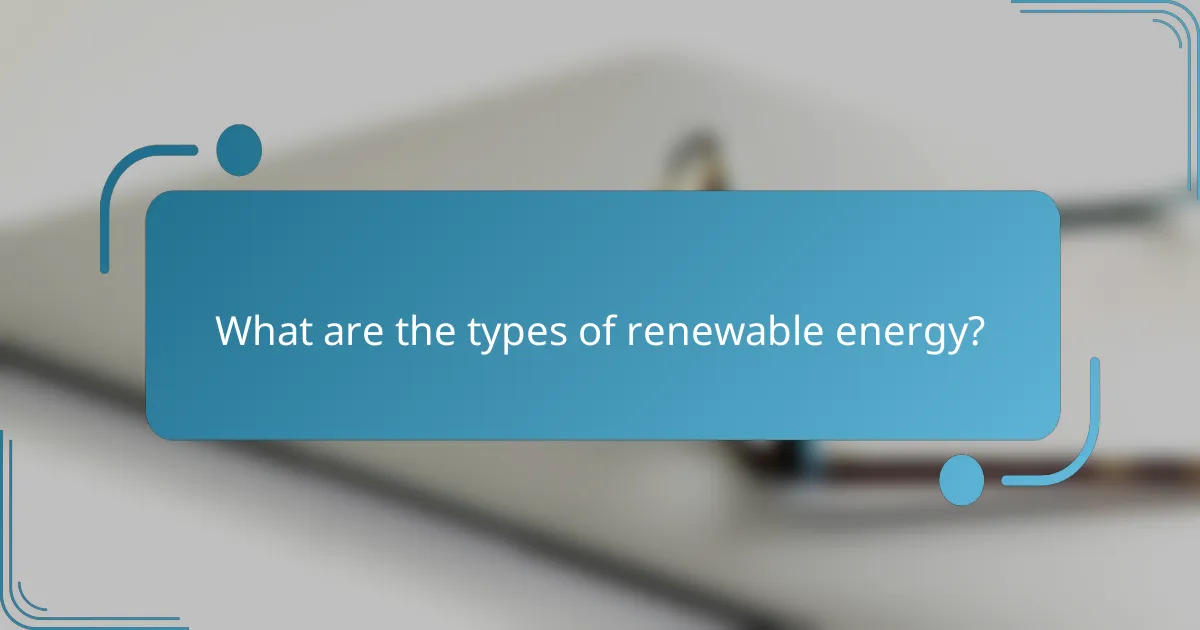
What are the types of renewable energy?
Renewable energy comes from natural sources that are constantly replenished. The main types include solar, wind, hydropower, geothermal, and biomass energy, each with unique characteristics and applications.
Solar energy
Solar energy harnesses sunlight using photovoltaic cells or solar thermal systems. It can be used for electricity generation or heating, making it versatile for residential and commercial applications.
When considering solar energy, evaluate the local climate and available sunlight. Regions with high sun exposure can significantly benefit from solar installations, often leading to reduced electricity bills and lower carbon footprints.
Wind energy
Wind energy is generated by converting the kinetic energy of wind into electricity using turbines. Wind farms can be located onshore or offshore, depending on the available wind resources.
To maximize efficiency, choose locations with consistent wind patterns. Areas with average wind speeds of at least 5-6 meters per second are typically suitable for wind energy projects, offering significant energy production potential.
Hydropower
Hydropower utilizes flowing water to generate electricity, often through dams or run-of-the-river systems. It is one of the oldest and most established forms of renewable energy.
When exploring hydropower, consider the environmental impact and regulatory requirements. Projects must balance energy production with ecosystem preservation, and local regulations may dictate operational practices.
Geothermal energy
Geothermal energy taps into the Earth’s internal heat for electricity generation or direct heating applications. It is particularly effective in regions with volcanic activity or hot springs.
Assess the geothermal potential in your area, as not all locations are suitable. Geothermal systems can provide consistent energy output, often with low emissions, making them a reliable option for sustainable energy.
Biomass energy
Biomass energy is produced from organic materials, such as plant and animal waste. It can be converted into electricity, heat, or biofuels, providing a versatile energy source.
When considering biomass, focus on sustainable sourcing to avoid deforestation or food supply issues. Biomass can contribute to waste reduction and energy production, but it requires careful management to ensure environmental benefits.
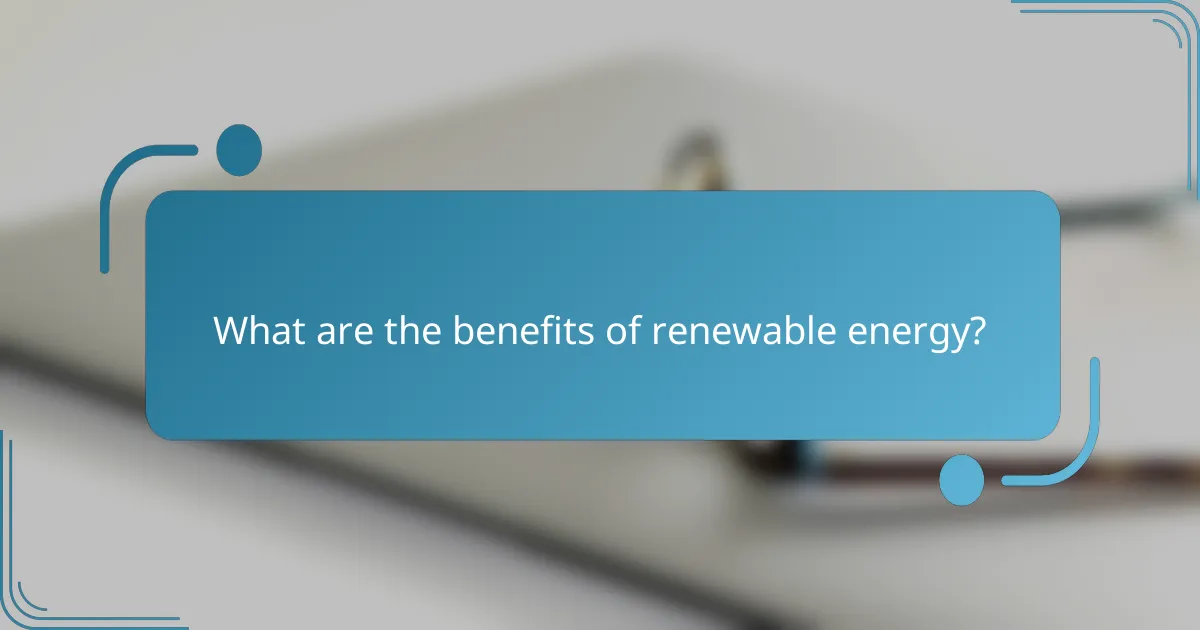
What are the benefits of renewable energy?
Renewable energy offers numerous advantages, including reduced environmental impact, enhanced energy security, job creation, and potential long-term cost savings. These benefits make it a compelling choice for individuals and nations aiming for sustainable development.
Environmental sustainability
Renewable energy sources, such as solar, wind, and hydro, significantly lower greenhouse gas emissions compared to fossil fuels. This reduction helps combat climate change and preserves natural ecosystems, leading to a healthier planet.
Utilizing renewables also minimizes air and water pollution, which can result in better public health outcomes. For instance, transitioning to wind energy can decrease respiratory diseases linked to air quality degradation.
Energy independence
Adopting renewable energy can enhance a country’s energy independence by reducing reliance on imported fossil fuels. This shift allows nations to harness local resources, such as sunlight and wind, which can stabilize energy prices and improve energy security.
For example, countries investing in solar farms can generate their own electricity, decreasing vulnerability to global market fluctuations and geopolitical tensions associated with oil and gas supplies.
Job creation
The renewable energy sector is a significant source of job creation, often outpacing traditional energy industries. Jobs in solar panel installation, wind turbine maintenance, and energy efficiency services are on the rise as demand for clean energy solutions grows.
According to various industry reports, the transition to renewables could create millions of jobs globally, providing opportunities for skilled workers and contributing to local economies.
Long-term cost savings
Investing in renewable energy can lead to substantial long-term cost savings for both consumers and businesses. Once established, renewable energy systems typically have lower operational costs compared to fossil fuel systems, which require ongoing fuel purchases.
For instance, solar energy systems can reduce electricity bills significantly, with many homeowners recouping their initial investment within a decade. Additionally, as technology advances, the cost of renewable energy continues to decline, making it an increasingly affordable option.
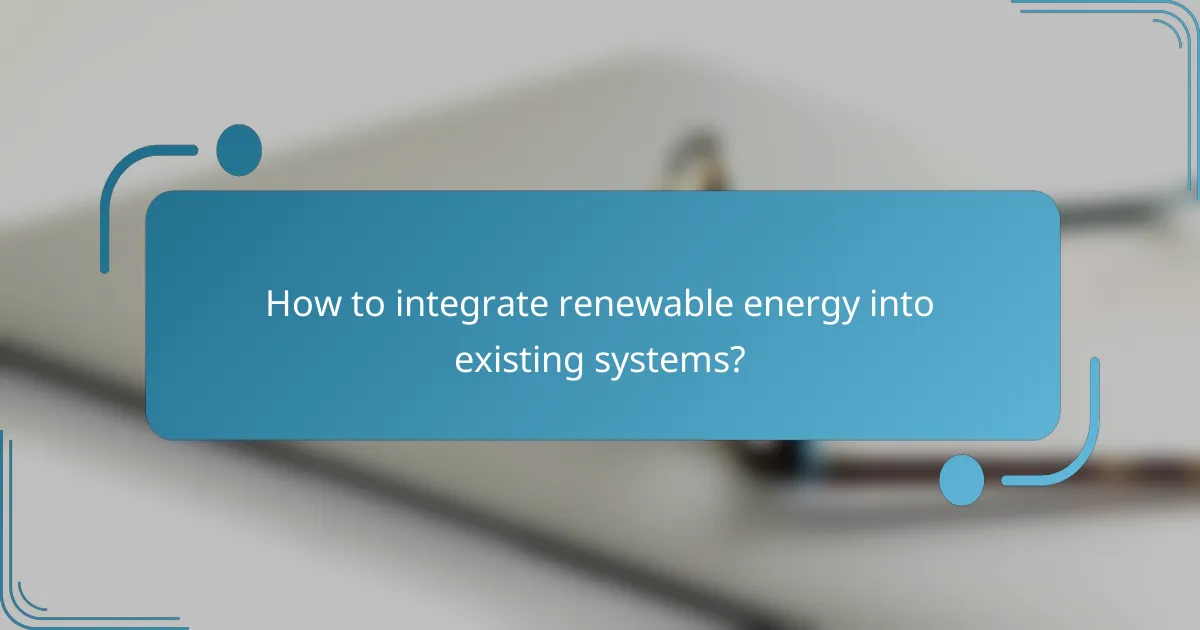
How to integrate renewable energy into existing systems?
Integrating renewable energy into existing systems involves adapting current infrastructure to accommodate sources like solar, wind, and hydroelectric power. This process requires careful planning, investment in technology, and consideration of regulatory frameworks to ensure a seamless transition.
Grid integration strategies
Grid integration strategies focus on how renewable energy sources can be connected to the existing electricity grid. Key approaches include upgrading transmission lines, implementing demand response programs, and using microgrids to manage localized energy generation. These strategies help balance supply and demand, ensuring reliability and efficiency.
For example, utilities can invest in flexible transmission systems that allow for the easy incorporation of renewable sources. Additionally, establishing partnerships with local energy producers can enhance grid resilience and reduce dependency on fossil fuels.
Energy storage solutions
Energy storage solutions are crucial for managing the intermittent nature of renewable energy. Technologies such as batteries, pumped hydro storage, and thermal storage systems can store excess energy generated during peak production times for use during low production periods. This capability helps stabilize the grid and ensures a consistent energy supply.
When selecting storage solutions, consider factors like capacity, discharge rates, and lifecycle costs. For instance, lithium-ion batteries are popular for their efficiency and scalability, while pumped hydro is effective for large-scale storage but requires significant geographical and infrastructural considerations.
Smart grid technology
Smart grid technology enhances the integration of renewable energy by using digital communication tools to monitor and manage electricity flows. This technology allows for real-time data analysis, enabling utilities to optimize energy distribution and improve grid reliability. Smart meters and automated demand response systems are examples of tools that facilitate this integration.
Implementing smart grid solutions can lead to increased energy efficiency and reduced operational costs. Utilities should prioritize investments in cybersecurity and interoperability to protect the grid and ensure that various technologies can work together seamlessly.

What are the challenges of adopting renewable energy?
Adopting renewable energy presents several challenges that can hinder its widespread implementation. Key obstacles include high initial investment costs, the need for specialized infrastructure, and navigating complex regulatory frameworks.
Initial investment costs
The initial investment costs for renewable energy systems can be significant, often requiring substantial capital upfront. For example, solar panel installation can range from several thousand to tens of thousands of dollars, depending on the system size and technology.
To mitigate these costs, consider financing options such as loans, leases, or power purchase agreements (PPAs). Additionally, government incentives and tax credits can help offset initial expenses, making renewable energy more accessible.
Infrastructure requirements
Renewable energy sources often necessitate specific infrastructure to harness and distribute energy effectively. For instance, wind farms require land for turbines and connections to the power grid, while solar installations need adequate roof space or ground area.
Investing in grid upgrades may also be essential to accommodate the variable nature of renewable sources. Planning for energy storage solutions, like batteries, can enhance reliability and efficiency in energy distribution.
Regulatory hurdles
Regulatory hurdles can complicate the adoption of renewable energy, as policies and regulations vary widely by region. Navigating local, state, and federal regulations can be time-consuming and may require permits or compliance with specific standards.
Engaging with local authorities early in the planning process can help identify potential regulatory challenges. Staying informed about changes in legislation and incentives can also facilitate smoother project implementation.
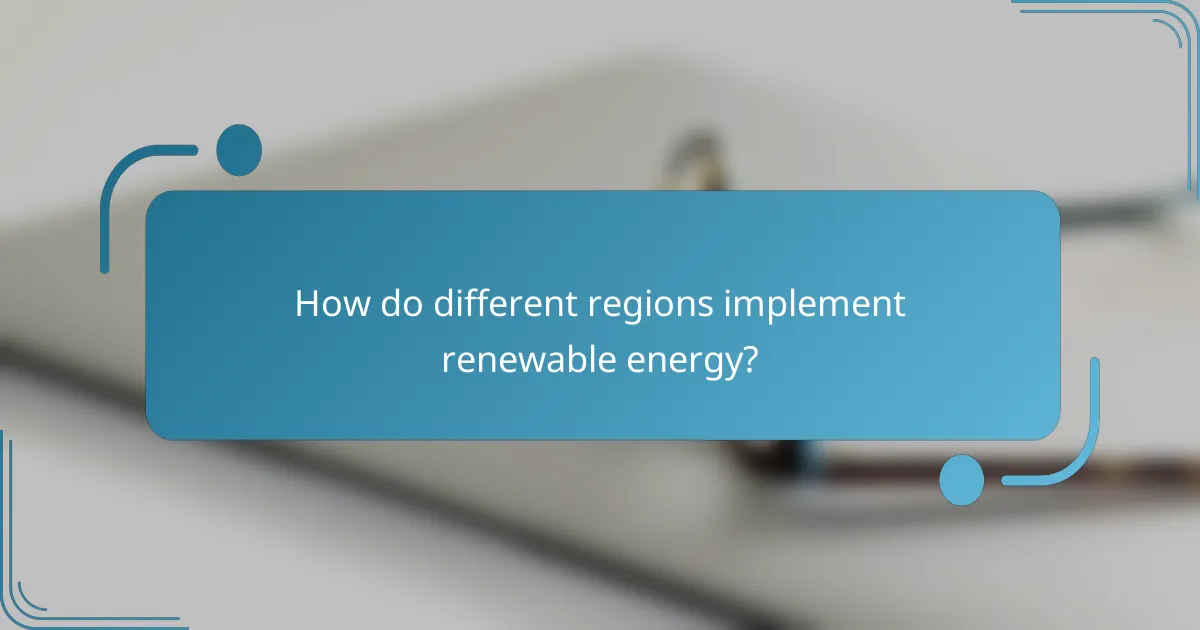
How do different regions implement renewable energy?
Regions implement renewable energy through a combination of policies, incentives, and technologies tailored to their specific resources and needs. This often involves investing in local energy sources like solar, wind, and hydroelectric power, alongside supportive regulations to encourage adoption.
California’s solar initiatives
California leads the United States in solar energy implementation, driven by ambitious state policies and incentives. The California Solar Initiative provides rebates for residential and commercial solar installations, making solar power more accessible to a wider audience.
In addition to financial incentives, California has set a target for 100% clean energy by 2045, encouraging further investment in solar technology. The state also mandates that new homes include solar panels, significantly increasing the rate of solar adoption.
Residents can benefit from net metering, allowing them to sell excess energy back to the grid, which can offset installation costs. However, potential adopters should consider local regulations and utility requirements to ensure compliance and maximize benefits.



